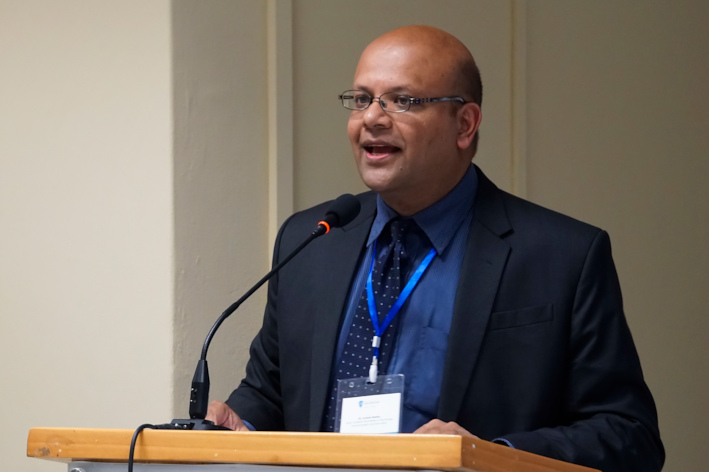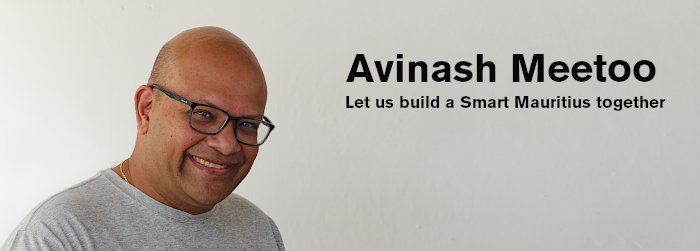
A few weeks ago, I saw this online and it resonates with me: “The Senior Advisor is tasked with raising dialogue to a strategic level, both internally and externally. They will undoubtedly be an expert in their chosen field.” This is what I loved doing during the four years: raising the dialogue to a strategic level i.e. medium- and long-term. I am less interested in today. I’m much more interested in tomorrow, next year and in ten years.
Since becoming a Senior Adviser in June 2017 at the Ministry of Information Technology, Communication and Innovation and also a board member of the National Computer Board (NCB) and the University of Technology (UTM), I have contributed, in some way or another, in multiple policies and projects which, I hope, will help transform Mauritius into a better country in the years to come.
Here is a selection of key public-facing moments during those past four years:
- Organisation and participation in eLearning Africa conference (September 2017)
- Participation in Robotics Workshop organised by MRIC (November 2017)
- Transformation of Infotech into Innovtech (November 2017)
- Adoption of a Data Protection Bill for personal data (December 2017)
- Appointment as board member of the National Computer Board (February 2018)
- Participation in the Google Africa Internet Academy (March 2018)
- 50 Fraz pou 50 An Lindepandans (March 2018)
- Launching of an ICT Awareness Training for Senior Citizens by the NCB (April 2018)
- Appointment as board member of the University of Technology, Mauritius (July 2018)
- Presentation on Jobs of the Future at Infotech Rodrigues (August 2018)
- Organisation of Innovtech 2018 event and conference (August 2018)
- Member of the working group on Artificial Intelligence at the Prime Minister’s Office (October 2018)
- Interview in Talk of the Town on Radio Plus on Artificial Intelligence (November 2018)
- A conversation with Sophia and organisation of the World AI Show and the World Blockchain Summit 2018 (November 2018)
- Interview on CNBC Africa on the rise of Africa’s digital economy (December 2018)
- Participation in the African Space Generation Workshop (December 2018)
- Organisation of the Inter Village Innovation Competition in the district of Moka (December 2018)
- Launching of the Digital Mauritius 2030 Strategic Plan, Digital Government Transformation Strategy 2018-2022 and Mauritius Artificial Intelligence Strategy (December 2018)
- Sharing of thoughts on the Jobs of the future and how YOU can prepare for them in the Rodrigues Regional Assembly (February 2019)
- Opening of a National Computer Board 3D Printing Centre at Coromandel (March 2018)
- Participation during the National Research Week for the Higher Education Sector 2019 (April 2018)
- Presentation on Research Opportunities in the Digital Economy during the Assises de la Recherche at the Université des Mascareignes (June 2019)
- Organisation of the African Peering & Interconnection Forum (AfPIF) Conference (August 2019)
- Organisation of Innovtech 2019 and the prize giving ceremony for the Inter Village Innovation Competition (September 2019)
- Participation in the launching of the 1st ground station for the MIR-SAT1 satellite project at Hassan Rafa SSS (September 2019)
- Presentation on the Privacy Aspects of ICT Projects during the Data Protection Today conference (January 2020)
- Member of the special independent panel of experts to “Fast-track Innovative Projects to counter the impact of COVID-19” (April 2020)
- Strategic discussions to revamp the NCB into Digital Mauritius to empower citizens even more (July 2020)
- Member of the special independent panel of experts to “Building Blue Resilience through Innovation” (September 2020)
- Interview on the theme of “Post COVID-19, quel avenir pour le secteur des TIC?” on Wazaa FM (September 2020)
- Strategic discussions on the setting up of a Mauritius Digital Transformation Agency (MDTA) (September 2020)
- Interview during Tibiznes dan Moris on “Comment valoriser davantage votre business?” on Wazaa FM (October 2020)
- Participation in a panel on Emerging Technologies during the Innovation for All Summit 2020 (November 2020)
- Last day at the Ministry of Information Technology, Communication and Innovation (25 January 2021)
I was always focussed on one thing: how to make Mauritians more innovative so as to reach Vision 2030 to transform Mauritius into a smarter country.
Of course, I was never alone. During the past four years, I have been lucky to be able to work with some extraordinary people in Government, in parastatal bodies, in private companies and a number of individuals from the civil society. I would like to thank all of them.
Horizon 2030, that’s my motto ?
